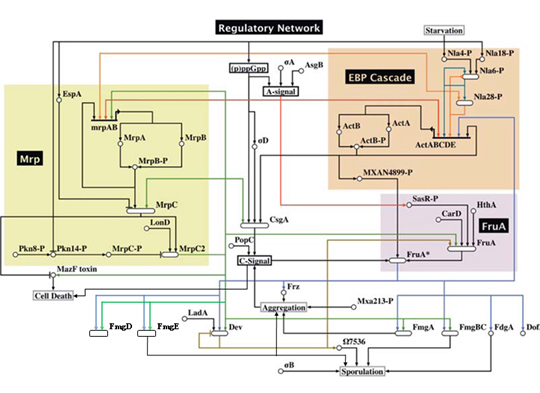Research: Project 4

Starvation causes an increase of the intracellular signal (p)ppGpp, which leads to production of the intercellular A- and C-signals. These signals provide input into 3 regulatory modules designated the enhancer-binding protein (EBP) cascade, Mrp, and FruA. Background shading highlights the 3 regulatory modules. Arrows indicate positive regulation and lines with barred ends indicate negative regulation. Several lines are colored for emphasis. In response to C-signal, activated FruA (FruA*) is proposed to drive the frizilator that controls cell reversals (Frz), causing aggregation. FruA* also is proposed to activate transcription of target genes, often in cooperation with MrpC2 from the Mrp module, and some of the target genes are important for aggregation or sporulation. Adapted from Kaiser, Robinson, and Kroos 2010 Cold Spring Harb. Perspect. Biol. 2:a000380.